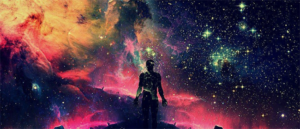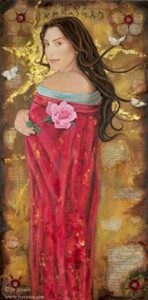world religions
Ultimate Reality
August 16, 2019Fr. Richard Rohr, Center for Action & Contemplation:
Rami Shapiro, a rabbi, teacher, and author on Judaism and spirituality reflects on the enriching, powerful experience of interspiritual dialogue initiated by Fr. Thomas Keating (1923–2018).
In 1984 Father Thomas Keating invited a small group of contemplatives from eight different religious traditions—Buddhist, Hindu, Jewish, Islamic, Native American, Russian Orthodox, Protestant, and Roman Catholic—to gather at St. Benedict’s Monastery in Snowmass, Colorado, to engage in what he called “a big experiment.” [1]
The experiment was to see what would happen when meditators from different traditions meditated together and shared the spiritual insights they gleaned from their meditation. Within a few days it became clear to the attendees that while their religious vocabularies were different, their experiences were not. As one attendee put it:
I enter into meditation as a slice of American cheese: thick and solid; my egoic self intact and feeling apart from both God and creation. I return from meditation as a slice of Swiss cheese: thin and filled with holes. I know myself and all others to be a part of God. Indeed, there is no other at all, only the One, the Whole, the Ultimate Reality I am calling God. And with this sense of wholeness comes a sense of holiness, a sense of love from and for all beings. . . .
During the first few years of the Snowmass Conference, a series of agreements arose among the attendees. Father Thomas compiled the first eight and brought them to the group for consideration. With lots of conversation and some editing, the Snowmass Conference Eight Points of Agreement came into being. We include them here as a way of sharing a contemporary expression of perennial wisdom arising not from ancient texts but from the lived experience of contemporary mystics—women and men who, while coming from specific traditions, dare to step beyond them to see what is on its own terms.
The Eight Points of Agreement
1. The world religions bear witness to the experience of Ultimate Reality, to which they give various names.
2. Ultimate Reality cannot be limited by any name or concept.
Ultimate Reality is the ground of infinite potentiality and actualization.
3. Faith is opening, accepting, and responding to Ultimate Reality. Faith in this sense precedes every belief system.
4. The potential for human wholeness—or, in other frames of reference, enlightenment, salvation, transcendence, transformation, blessedness—is present in every human being.
5. Ultimate Reality may be experienced not only through religious practices but also through nature, art, human relationships, and service to others.
6. As long as the human condition is experienced as separate from Ultimate Reality, it is subject to ignorance and illusion, weakness and suffering.
7. Disciplined practice is essential to the spiritual life; yet spiritual attainment is not the result of one’s own efforts, but the result of the experience of oneness with Ultimate Reality. [2]
It took us until the late 20th century to say such things, and now we almost see them as obvious. There is indeed an evolution of consciousness and a convergence of consciousness that does not need to dismiss or dilute any one tradition.
[1] The Common Heart: An Experience of Interreligious Dialogue, ed. Netanel Miles-Yepez (Lantern Books: 2006), 1.
[2] Thomas Keating, “The Points of Agreement,” Introduction to The Common Heart, xvii-xviii.
Collective Feminine Wisdom
June 18, 2019Wise Women
Friday, June 14, 2019
‘As you have undoubtedly noticed, the feminine is rising at last, overflowing the banks of every landscape, from politics to religion, from the world of entertainment to the fields of peace and justice. She is unconditionally loving, and she is deliciously irreverent. She is shifting the global paradigm from one of dominance and individualized salvation to one of collective awakening and service to all beings.
Her wisdom has been hidden in the heart of each of the great spiritual traditions: Hinduism, Buddhism, Taoism, Judaism, Christianity, Islam, and all Indigenous wisdom ways. Access to these jewels has required excavation, but the treasures that have emerged are transfiguring the soul of the world, offering medicine for the broken heart of humanity and the materials needed to mend the torn fabric of the earth.
Ever since I was a young girl, I have been irresistibly drawn to every religion I encountered. Born into a non-religious Jewish family, I had embraced multiple spiritual traditions by the time I was twenty and integrated them into my daily life: a deep devotion to an Indian saint, a daily Buddhist meditation practice, initiation into multiple Sufi lineages, a reclamation of the ancient beauty of my ancestral home in Judaism, and an unexpected friendship with Christ through the mystics, whose words I have since translated. Each of these paths has comingled in my being, creating a rich and robust spiritual soil.
It is the Christian women mystics who have become my most cherished spiritual sisters and role models. The sixteenth-century Spanish mystic, Teresa of Ávila [1515–1582] has shown me what it looks like to cultivate ecstatic intimacy with God in the center of my own being and also find my Beloved “living among the pots and pans.” The medieval Rhineland visionary Hildegard of Bingen [1098–1179] praises God’s greening energy in every particle of creation, helping me to glimpse the face of the One in all that is. The English anchoress Julian of Norwich [1342–1316] had a near death experience in which Christ revealed himself as an unconditionally loving Mother who continuously breaks herself open and pours herself out to her children, endlessly forgiving and enthusiastically adoring us.
Through each of these wise women, I have come to recognize the holiness of incarnation. There is nothing in this gorgeous, messy world, not a thing in my own imperfect perfection, no place in the scope of the human predicament or the majesty of the natural world that is not, by its very nature, blessed: the chosen dwelling place of the One we love. [1]
Our experiences of embodiment may not always correspond with idealized images of holiness, but these preconceptions derive from masculine standards of perfection. Such paradigms have caused great harm, and they are no longer valid. I invite you to abandon your efforts to fix yourself and instead reclaim your innate beauty and worth as a luminous cell in the body of Mother Earth.’ [2]
[1] Mirabai Starr, “Indwelling and Outflowing,” the Mendican, vol. 9, no. 2 (Center for Action and Contemplation: 2019), 3.
[2] Mirabai Starr, Wild Mercy: Living the Fierce and Tender Wisdom of the Women Mystics (Sounds True: 2019), 154.

